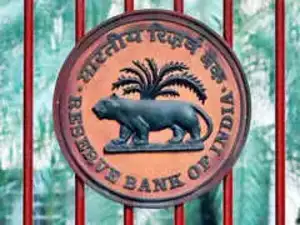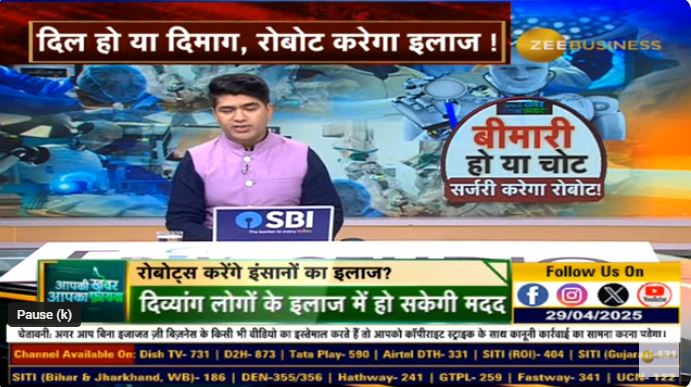New Delhi: The Reserve Bank’s decision to keep the benchmark interest rate stable is pragmatic and will ensure sustainable economic growth, say experts. The RBI Monetary Policy Committee on Thursday decided to keep policy rate unchanged for the sixth time in a row in view of global uncertainty and the need to bring down retail inflation to 4 per cent.
Commenting on the monetary policy, Assocham Secretary General Deepak Sood said that while the continued focus on moderating inflation to the target of 4 per cent has to be seen in the overall context of global and domestic challenges, mainly with regard to food prices, RBI’s customer-centric approach is laudable.
The chamber has described the decision to keep the benchmark policy rates unchanged as pragmatic for sustainable economic growth.
Lakshmi Iyer, CEO-Investment & Strategy, Kotak Alternate Asset Managers said no major worries expressed on the inflation front are comforting, but for food price fluctuations – the watch for global cues however continues.
“While FY’25 inflation forecast is at 4.5 per cent, as per RBI the last mile walk is very crucial, hence the walk towards headline CPI of 4 per cent is key for RBI,” Iyer said.
Chairman of CII Delhi State Council and MD & CEO of Samtel Avionics Puneet Kaura, said given the prevailing economic and inflationary conditions, the RBI’s action aligns with expectations.
“This measure, aside from providing support to interest-sensitive industries such as real estate and automobiles, will also notably assist manufacturing and the MSME sector,” he said.
Ranen Banerjee, Partner and Leader Economic Advisory, PwC India said the MPC decision to keep the policy rate unchanged was expected, but the stance is also kept at the withdrawal of accommodation which is possibly a surprise.
“This possibly is explained by the fiscal consolidation with Government projecting a lower deficit than target in FY24 and an aggressive 5.1 per cent deficit target for FY25,” he said.
The lower government borrowings and higher international money allocations to India bonds owing to inclusion of India in the JP Morgan Emerging Markets bond index will keep a downward bias on the yields, Banerjee said.
The real GDP growth for the next financial year is projected at 7 per cent with Q1 growth at 7.2 per cent, Q2 at 6.8 per cent, Q3 at 7 per cent and Q4 at 6.9 per cent.
Sanjay Bhutani, Board Member, Medical Technology Association of India (MTaI) said as inflation remains close to the RBI’s upper limit, the decision to hold rates steady is unsurprising.
“However, many sectors, including the capital-intensive and research-driven medical technology industry, eagerly await a potential rate cut later this year,” he said.
M K Dhanuka, Managing Director, Dhanuka Agritech opined that while the RBI held steady on interest rates this time, continued access to affordable financing remains crucial for Indian agriculture’s long-term prosperity.
“We hope RBI would soon start lowering policy rates as it would act as a catalyst for such investments, complementing government efforts to promote farm mechanization and address critical agricultural challenges,” Dhanuka added.
RBI had last raised the repo rate in February 2023 to 6.5 per cent after six consecutive rate hikes aggregating to 250 basis points since May 2022.
Siddhartha Sanyal, Chief Economist and Head of Research, Bandhan Bank said amid widespread concerns about liquidity tightness, the RBI’s communication suggested that stepping up in government spending should help infusing liquidity into the banking system.
“We continue to believe that in case of a need for the banking system, especially towards the end of the financial year, the RBI may provide liquidity support in a nuanced fashion,” Sanyal said.
Uttam Tibrewal, executive director, AU Small Finance Bank said RBI’s policy was on expected lines with a focus on bringing inflation towards a targeted range of 4 per cent.
Monetary policy stance and steady rates over the last year have helped maintain healthy growth momentum while lowering inflationary pressures.
“Going forward we believe as inflation nears RBI’s 4 per cent goal, space for monetary easing would open up in the coming quarters, to support lower interest rates and credit demand,” Tibrewal added.
Rohit Arora, CEO and Co-founder, Biz2Credit and Biz2X said the proposal for a principal-based authentication framework in digital payments boosts security and promotes digital financial services adoption, particularly benefiting MSMEs.
He also said the decision to maintain the repo rate at 6.5 per cent reflects cautious economic management amidst uncertainties.
“This decision reflects the RBI’s cautious yet optimistic stance, aligning with a stable interest rate environment and fostering borrower confidence for informed financial decisions,” Kaushik Mehta, Founder & CEO of RUloans Distribution, stated. Borrowers, particularly in home and personal loans, may explore options to optimize their financial commitments, such as transferring loans to banks offering lower rates or opting for part payments to reduce EMIs, Mehta said.
The next meeting of the Monetary Policy Committee (MPC) is scheduled for April 3 to 5, 2024.
SOURCE – The Economic Times




